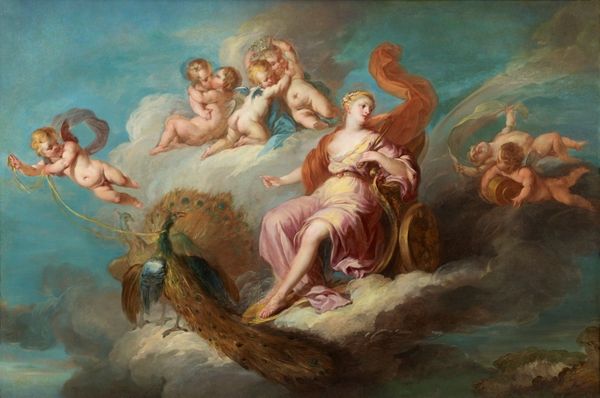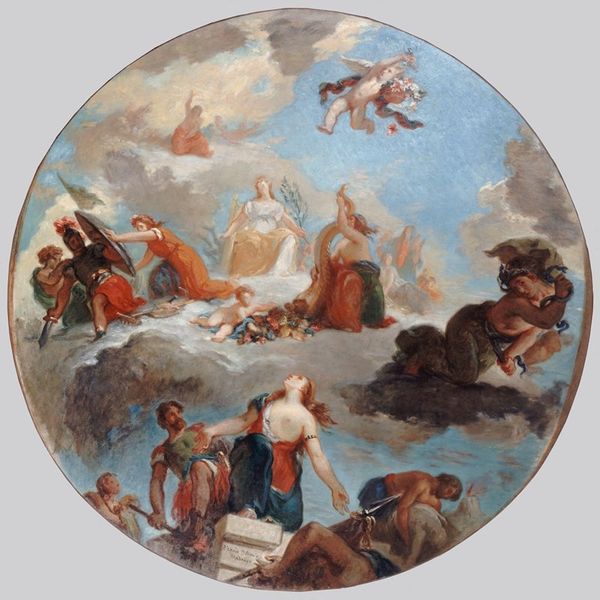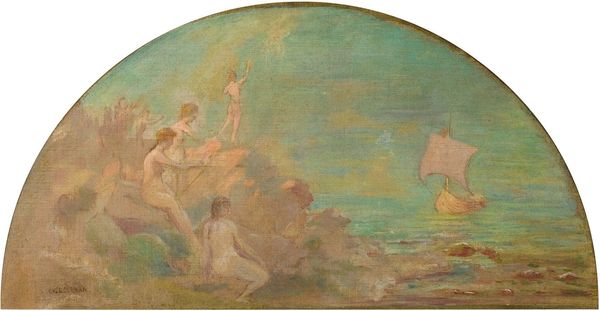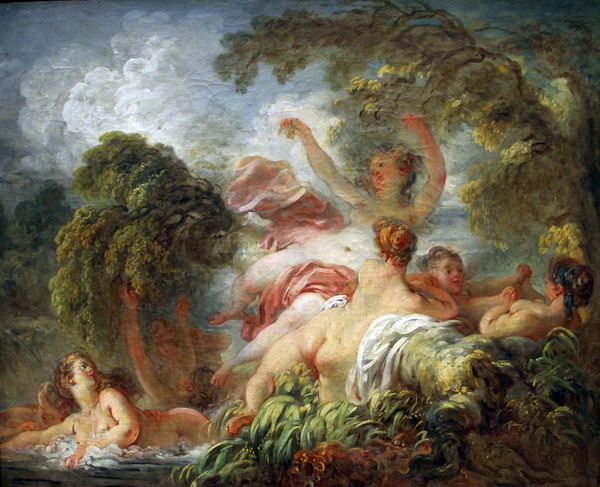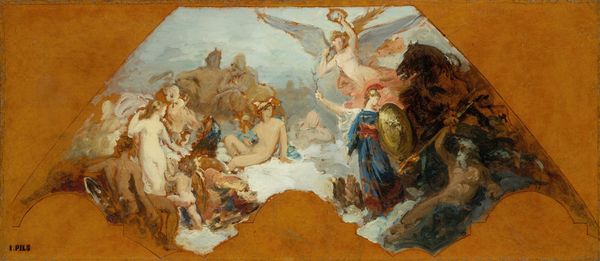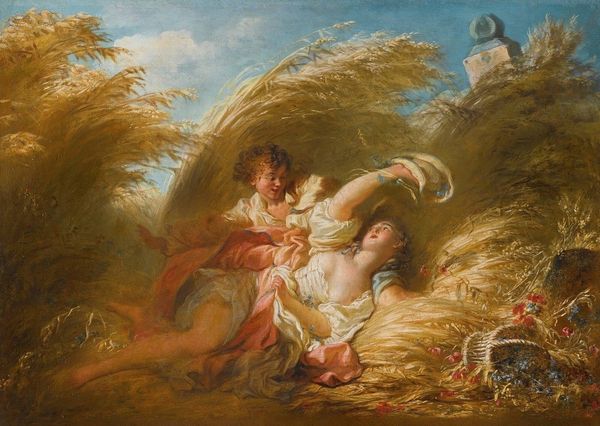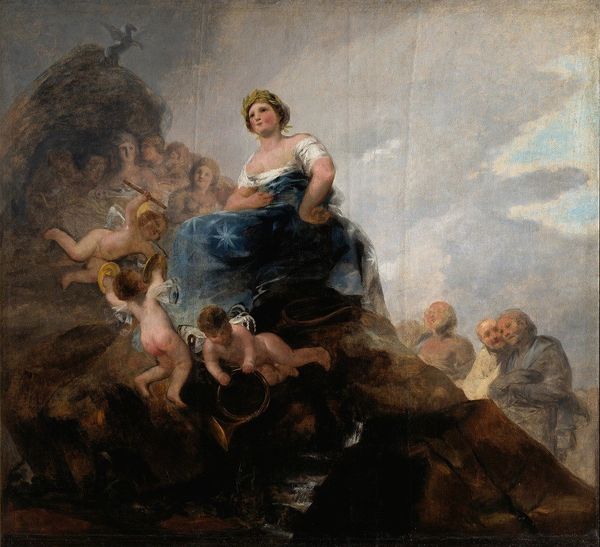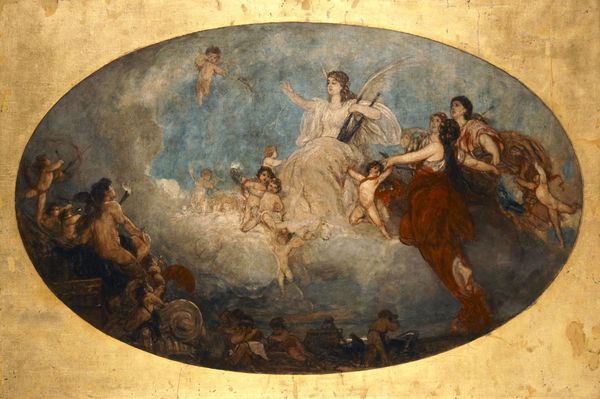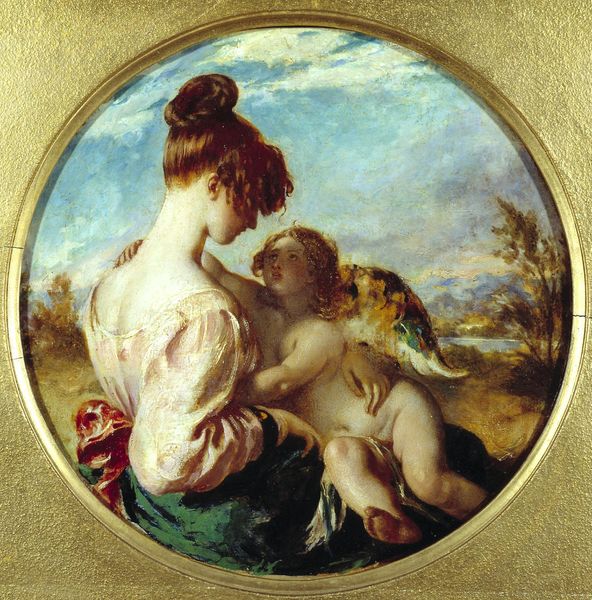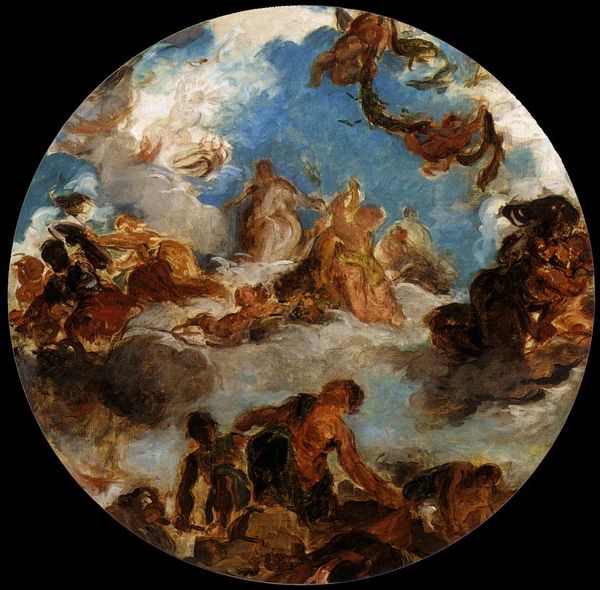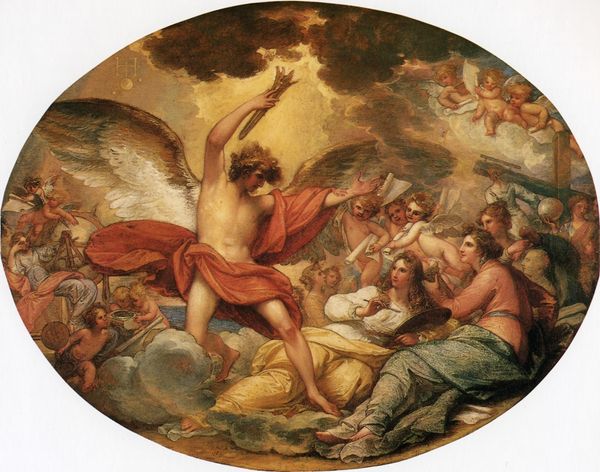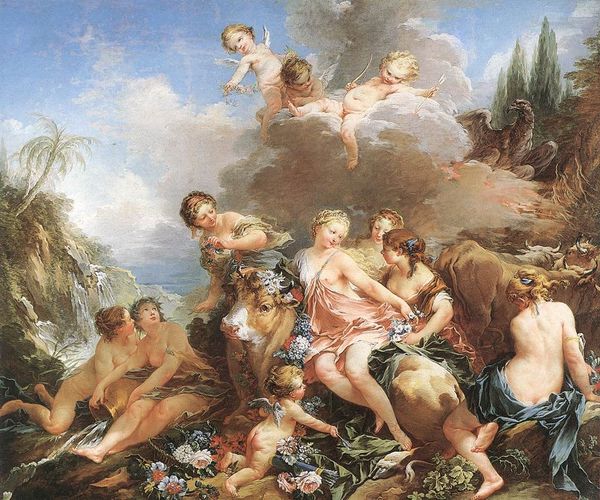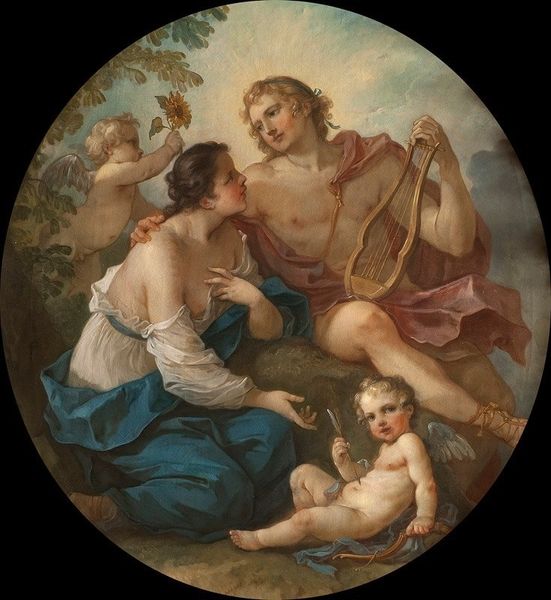
painting, gouache
#
gouache
#
figurative
#
painting
#
gouache
#
figuration
#
oil painting
#
painting painterly
#
genre-painting
#
rococo
Copyright: Public Domain: Artvee
Curator: Fragonard's "Perrette et le pot au lait," from 1770, is a captivating painting, brimming with the dynamism and extravagance characteristic of the Rococo period. It's rendered in gouache, giving it a soft, almost dreamlike quality. Editor: The figures have this whirlwind of movement, almost operatic despair! There's a story, an emotional crux here—and it's hard to look away, isn't it? The way Fragonard uses color, like a blush, is compelling, suggesting there is much going on. Curator: Absolutely. It depicts a scene inspired by La Fontaine's fable of the milkmaid whose daydreams of future wealth are shattered when she spills her milk. We can analyze the artwork in relation to class consciousness and societal roles of women at the time. Perrette's shattered dreams symbolize the precarious nature of social mobility. The milk itself functions as a metaphor for feminine potential, which is dashed when exposed to outside influences. Editor: Right! You can even trace that narrative thread of broken potential through similar stories in different cultures, using symbolic meanings attached to milk: abundance, nourishment, motherhood. So Perrette embodies a collective anxiety about the loss of security and the vulnerability of hope. But that tilted pot, that's like a vase in memento mori traditions, no? The moment of spillage: transformation, life as we imagine giving way to brutal realities. Curator: Precisely. This work echoes a common trend in Enlightenment-era art and literature. They wanted to present seemingly innocent fables and images to cloak underlying sociopolitical commentary and encourage its audiences to contemplate their place in the established order. The active choice to showcase Perrette in a horizontal composition on the ground further symbolizes her position in society. Editor: And it serves, in its own way, as a cautionary figure whose form reminds you of classical reclining figures. A strange thing to combine and ponder in a painting such as this! Curator: Indeed. So much to interpret in this small-scale piece! Editor: Seeing that now, yes, a brief meditation on how we read ourselves within stories, myths, paintings. It's like an extended look, perhaps with a tinge of modern melancholia.
Comments
No comments
Be the first to comment and join the conversation on the ultimate creative platform.
